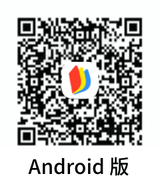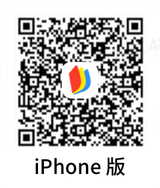




As noted in Golden Mirror of Medicine-The Tips of Bone-setting, strength used in bone-setting is required to transition from weak to strong, while the practitioner’s hands shall move from the distal end to close to the trigger point, and from top to bottom, while pressing from in a shallow manner to deeply,to avoid secondary damage. First of all, the practitioner needs to get totally familiar with the fracture or dislocation by palpation or X-ray, and construct a three-dimensional structure in his mind to design a treatment plan.“To get totally familiar”means the practitioner should know specific conditions of the fracture, the broken bone’s anatomy, and its broken end’s muscle traction direction, to avoid iatrogenic damage including bruises, expansion of hematoma, aggravation of displacement and long-term myositis ossificans. What mentioned above is the precondition of realizing“gentleness and softness”in applying TCM bone-setting techniques, which is further guaranteed by the eight methods of TCM bone-setting.
《医宗金鉴》在“正骨心法要旨”中有关手法运用记载“机触于内,巧生于外,手随心转,法从手出”,其意义在于告诉我们,手法必须遵从先轻后重、由浅入深、由远及近、自上而下的原则,切忌动作粗暴增加二次伤害,给患者增加痛苦。要做到准确的骨折整复,就要首先充分了解骨折情况,用手触摸骨折部位或通过阅片,首先在自己大脑中形成骨折的三维立体结构,以“知其体相,识其部位”,从而构思相应的整复步骤,使骨折整复过程中做到心中有数、一气呵成。要做到这一点,就必须熟知骨折部的解剖及断端肌肉的牵引方向,充分了解骨折的条件,这样才能从机触至巧生,避免不必要的暴力,减少无谓的损伤,如挫伤皮肤、扩大血肿、加重移位及远期骨化性肌炎等医源性损伤。上述是手法轻巧细腻的前提,中医传统的正骨八法则是轻巧细腻的基础。
Anyone wants to be an expert and be skilled in these methods’application can start from summarizing clinical experience and finding the patterns, which will be very helpful to master the complete system of bone-setting techniques. To take the manipulation for shoulder dislocations as an example, the practitioner will use one thumb to press on the numeral head, while the hand’s other four fingers pressing on the shoulder peak as counter points to prevent the numeral head from moving to other points, so as to directly reset the numeral head by utilizing the principle of lever in a short distance.Assistant A needs to fix the patient’s uninured side to avoid any movements during resetting and assistant B rotates and stretches the dislocated shoulder outward and let it slowly reach the articulations capsule below glenoid cavity by intorsion with soft and gentle strength. Another example is humeral condylar comminuted fractures treated with integrated TCM and western medicine. Comminuted fractured segments may hurt articular surface which may cause the bone to dislocate again and such instability may affect the recovery of joints. For intra-articular fractures like this, the practitioner shall keep the articular surface flat and complete with stable fixation, so that patients can begin functional exercises as early as possible. To make it, the practitioner shall use one thumb to press on one side of condyle, while finding the dislocated or severe separated one, and push the dislocated condyle to the right position with another hand’s thumb and index finger, utilizing the triangle between them and olecranon. In this way, the broken bones can be successfully reset. After resetting is done, to prevent recurred dislocations in distal side, the practitioner shall pull ulna and olecranon and fix them with splints longer than the arm. In this way, condyle separations can be effectively prevented and functional exercise can be carried out as early as possible to accelerate recovery.
要熟练地掌握和运用手法,就要靠在临床中善于总结,并从中找出规律,从而形成一套规范的整复手法。例如对于治疗肩关节脱位的整复方法,主张术者利用拇指来使肱骨头复位,术者其他四指按在肩峰上用作对抗点,使肱骨头不脱向别的位置,这是利用短距离杠杆原理达到直接复位,同时第一助手固定患者健侧,既起到固定患者不会因手法整复而身体晃动,又起到对抗牵引的作用,第二助手顺势拔伸,将患肢向外旋转后通过内收、内旋手法,使肱骨头逐渐地离开脱出的位置到达关节盂下关节囊破口处,使整个操作手法细腻轻巧而准确。又如对肱骨髁间粉碎性骨折采用中西医结合的治疗方法,收到了满意的疗效。此类骨折由于骨折块呈粉碎状且侵犯到关节面,所以整复后固定不稳,往往使骨折再次移位,严重影响关节功能的恢复。由于它属于关节内骨折,整复时,除要求力线好之外,更重要的是要保证关节面的平整,而且还需要有可靠稳妥的固定和早期的功能锻炼活动。对这类骨折的整复方法是“找髁”和“抱髁”,其中“找髁”就是术者用一手拇指固定按住患者一侧接近解剖位置的髁,用另一手找到翻转或者严重分开的一侧髁,利用两髁及鹰嘴的特定三角骨标志关系,将移位的一侧髁用拇指和食指捏稳,慢慢将其移正并向中心推挤,这样每每可得到满意的复位效果。复位后通过尺骨鹰嘴骨牵引限制骨折远近段的重叠移位,用超关节的夹板加压垫固定,限制了内外侧髁的分离,患肢可以进行适度的早期活动,从而保持了关节的活动功能而收到良好的效果。
By massage, swelling, blood stasis as well as adhesion can be relieved, and circulation can be accelerated. But injuries and dislocations may be aggravated if the massage is conducted improperly or with too much strength. Massage with peaceful strength requires the unity of contradictions and a balance of stableness, accuracy and penetration in exerting strength. By“peaceful”, it means the strength used in manipulation should transition from light to strong, and the hands shall move from the distal end to close to the trigger point along the bone without piling on the patients’agony.“Strength”means the practitioner needs to press first in a shallow manner and then press deeply with stable actions,paying attention to how the strength is exerted. Following this principle, all the techniques will bring about great effects in clinical practices.
按摩手法具有消除肿胀、祛除瘀血、促进循环、解除粘连的作用。但按摩手法用之不当或过于粗暴,反而会加重患部的重新损伤及骨折的移位程度。柔中带刚是对立统一的辩证关系,它并非单纯力度的表现,而是动作稳、准、透的统一。所谓柔就是在不增加患者痛苦的前提下,手法先轻后重、先远后近(相对痛点而言)、顺骨捋筋。所谓刚就是动作要稳,注意力的渗透,手法由浅及深。无论按、摩、点、揉、滚、打等均遵循上述原则,在临床上往往能达到事半功倍的效果。
For example, massage manipulation is not recommended by both TCM and western medicine for treating acute joint sprains, particularly ankle sprains in the early stage, because it’s believed that it may aggravate internal haemorrhage and blood stasis. But according to the theory of Huang’s Bone-setting Manipulation, massage if carried out properly can actually relieve the blood stasis. The appropriate steps are following: rub the blood stasis gently to dredge blood vessels; press the trigger point constantly for several minutes with increasing strength; and press and rub clockwise first around the trigger point and then across the whole joint. Lateral epicondylitis is another example. The practitioner uses one thumb to push and press from the distal end of lateral epicondyle to its proximal end slowly along the tendon several times, and then rubs and presses it, and fumigates and washes the affected part with specified TCM preparation. Such massage techniques can be applied not only to acute and chronic strains but also to shoulder dislocations. Muscles of patients suffering from shoulder dislocations are often tense because of pain, and proper massage can mitigate such tension to facilitate bone resetting. The practitioner will first use his knees to resist the patient’s shoulder with patient’s hands on the practitioner’s shoulder.Then with his neck leaning to the patient’s hands, the practitioner will press on the patient’s elbow joint along the forearm, to laterally move the dislocated bone. In the end, the practitioner will pull the dislocated bone vertically, and bend the elbow with hands holding olecranon of ulna, and the bone will be successfully reset.
例如急性关节扭挫伤,特别是踝关节扭伤早期,中西医均不主张实施手法按摩,谓可加重内出血,增加血肿。事实上只要手法运用得当,早期按摩反而可加速血肿吸收。方法是先用轻柔的手法推散血肿,顺理经络,然后点按痛点,力量由轻至重,按压数分钟后再沿痛点顺时针揉按,由点及面。手法完毕疼痛肿胀多可减轻。又如肱骨外上髁炎运用按摩手法亦收到满意效果。手法是先沿伸肌腱的方向用拇指指腹由远端缓慢推按至外上髁来回数次,然后沿外上髁揉按,再施以舒筋活络洗剂熏洗患部。按摩手法除运用于急慢性损伤,同时亦可运用于肩关节脱位的患者。肩关节脱位者多因疼痛而至肌肉紧张,给予轻柔的按摩之后,可降低肌肉的拮抗作用而利于复位。对肘关节脱位,采用手托膝顶法,即术者膝关节抵触患者肩部,患者手部置于术者肩部,同时术者颈部向患者手部倾斜,然后术者双手置于患者肘部,顺着前臂方向捋肘关节,从而纠正侧方移位,然后双手再纵向牵引,双手托尺骨鹰嘴部,再屈曲肘关节,即可复位。
In the long-term resistance against external pathogens caused by the hot and humid climate of the Lingnan region, local people gradually developed treatments for osteopsathyrosis. In western medicine,to treat osteopsathyrosis, removal surgery, butterfly-shaped bone drilling and plaster will often be applied. And destructive operations like amputation may be performed to save the patient’s life, if there is severe infections out of control, extensive damage or functional loss of limbs. Recently, Guangzhou Orthopaedics Hospital has adopted a comprehensive TCM therapy to treat both the external wound and the internal injury and received satisfactory results.
岭南地区湿热之气极盛,在长期抵御外邪的过程中,人们逐渐发掘出对于化脓性骨髓炎的治疗方法,西医的疗法一般采用病灶清除术、蝶形凿骨及封闭石膏疗法等。假如严重感染不能控制、破坏广泛、肢体功能丧失,还要采取破坏性手术截肢才能保存生命。近年来广州市正骨医院采用中医传统、内外兼治的方法治疗本病,取得比较好的效果。
In the early stage, the ulceration is painful and swollen. TCM believes this is the result of stagnation of Qi and blood stasis and inability to grow the new skin. Pain can be relieved and new skin can grow after applying detoxification prescription to regulate vital energy and promote blood flow. In the abscess stage, immovable, dark red, medium-soft and painful abscess is formed since the deeper layer of skin had been infected, pain will occur in other parts of body, symptoms including low fever, night sweats, lassitude in loin and legs, red tongue, less fur, sunken and fine pulses may also appear.This is called deficiency of liver-yin and kidney-yin by TCM. Therefore, prescriptions should be focused on nourishing liver and kidney. In the recovery stage, the abscess is light red, growing slowly. Symptoms include poor appetite and asthenia of Qi and blood. Astragalus mongholicus and deerhorn glue are recommended to promote wound healing by tonifying Qi and blood and improving body functions. To sum up, under the guidance of TCM, we should find the root cause and strengthen the body resistance by eliminating pathogenic factors.
本病溃面的表现与整体情况有客观的联系,有些溃面出现的症状,在外治的同时,通过辨证予以合理的内治,能收到意想不到的效果。如本病初期,溃面疼痛浸肿,这是脉络未通、气滞血瘀、腐肉不去致新肉不长,应用解毒方剂中加以理气活血和营通络剂,能达到消肿止痛、去腐生新的效果;如脓肿期,此时毒热壅盛,深窜入里,聚留于筋骨,推之不移,蕴毒为脓,局部皮肤微热暗红、中软。若按之应指,亦脓已成,多有体疼痛、低热盗汗、腰腿酸软、苔少、舌红、脉沉而细数等症,临床辨证为肝肾阴虚,肉腐成脓,此时应滋补肝肾,托里排脓;至于本病之破溃期,若溃面颜色清淡、生长缓慢、胃纳欠佳、气血虚弱,则应健脾和胃、补气补血,促进气血生化。此外还要重用黄芪之补气内托、鹿角胶之兴奋和改善机体功能,则可促进伤口愈合。治疗本病始终要以祖国医学的理论体系为指导。治病必须求本是治疗原则,首要是扶正祛邪,即使药力作用于整体,药力只有通过机体而起作用,促进机体生理机能旺盛,促使正盛邪衰,最后战而胜之。
Back to the early 1970s, Guangzhou Orthopaedics Hospital shared its prescriptions applied for a decade with Guangzhou Materials Factory, and successfully developed as well as produced“701”,a drug for relieving pains caused by traumatic injuries, and changed its previous form of solution for fumigating and washing affected parts to drug powder soluble in oil.“701”in the latter form has been not only widely used in Guangzhou Orthopaedics Hospital, but also popular both in China and abroad.In 1988, aerosol and massage cream for traumatic injuries were produced, a big step in transforming forms of drug used in orthopaedics.
早在20世纪70年代初期,广州市正骨医院就将用于临床10多年的处方和临床经验提供给广州市材料厂,成功研制出行销国内外的“701”跌打镇痛膏,将熏洗方剂改革为颗粒冲剂,研制成了广州市正骨医院广泛使用的跌打油;1988年又提供处方成功研制出创伤活络油气雾剂和理伤按摩膏,对骨科用药剂型改革做出了重要贡献。
Dietotherapy is also important for treating bone injuries and can be very helpful in the recovery stage. Dietotherapy for Tramatic Injuries, published by Guangdong Technology Press, is a collection of diet prescriptions for traumatic injuries from both ancient and modern monographys, and clinically proven self-made prescriptions of Guangzhou Orthopaedics Hospital. This book records more than 140 recipes of diet therapies for fractures, soft tissues injuries, internal injuries, bone and joint pain and arthralgia syndrome of bones and joints. It introduces the materials, working process, major efficacy of each recipe and makes comments on each one, while describing in detail the principles of diet therapy, as well as the food needs to be abstained from for treating such injuries from the perspective of nutriology.
跌打伤科饮食疗法是治疗伤科疾病的方法之一,对于骨关节损伤和疾患的治疗与康复起了很好的作用,是值得发掘和整理的内容。我们通过搜集散存于古今食疗书籍中有关跌打伤科的食疗方法及散流于民间和广州市正骨医院的一部分食疗验方,并结合自己多年的临床经验,主编了一部《跌打伤科饮食疗法》,此书由广东科技出版社出版发行,共收集食疗方140余首。全书根据中医伤科的治疗特点分为骨折、软组织损伤、内伤、骨与关节痛症、骨与关节痹症等类,在辨证施膳的原则下分别介绍了每方所需材料、制作过程、主治功效及评按等,并从营养学角度结合中医的食疗原则,对跌打伤科疾病的饮食禁忌做了相关阐述。